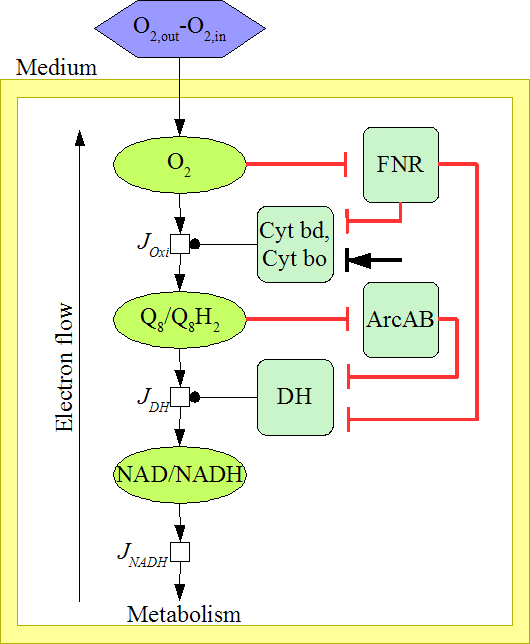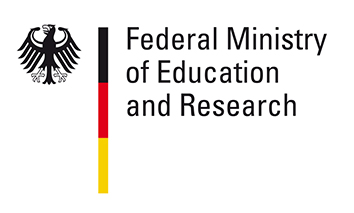| Project Overview |
|||
|
Within this project the ISYS is part of the SUMO consortium (Systems Understanding of Microbial Oxygen Responses) of the SUMO1 (I) Detailed kinetic modeling of Escherichia coli's electron transport chain
This project deals with the detailed kinetic modelling, identification and analysis of the TCA cycle (tricarboxylic acid cycle, citric acid cycle) and the ETC (electron transport chains, respiratory chains) of Escherichia coli. In comparison to the reduced order modelling this work package aims to reproduce the fast dynamic behaviour of these processes by the insertion of detailed mechanistic components as well as the use of fewer reducing assumptions concerning dynamics. Especially for the identification and the analysis of the models fast dynamic measurement data is required. The overall goal is a working simulation model for the mentioned reaction pathways under different oxygen availability levels. The organism can adapt to the changed conditions by changing the activation levels of different enzymes for one and the same reaction but with different properties. Thus certain mutants lacking one or more of these enzymes will give an inside to the regulation mechanisms. The simulation model can help to decide which mutants should be investigated and what further experiments should be undertaken.
 SUMO1 (II) Reduced-order modeling of global changes in Escherichia coli's metabolism
The response of Escherichia coli to different oxygen availability involves a severe reorganisation of the metabolic fluxes. The goal of the project is to mathematically model the regulatory systems and the relevant pathways (central metabolism, electron transport chain and fermentation pathways) in order to get a coherent understanding of the regulatory processes that lead to the oxygen response. Since the system under consideration is quite large, we seek for a reduced description that allows to describe the dominat effects only.
SUMO2 Systems Understanding of Microbial Oxygen-Dependent and Independent Catabolism in Escherichia coli
In SUMO2 the system and the models of SUMO1 are extended. The ISYS is continuing the mixed approach of detailed and reduced-order modelling. Within SUMO2 the following three major themes will be investigated:
|
| Partners |
|
The SUMO consortium is an european colaboration of 5 groups in Sheffield, Amsterdam, Magdeburg, Edinburgh and Stuttgart. Groups at the ISYS in Stuttgart, the MPI in Magdeburg, the DCS in Sheffield and the IANC in Edinburgh are concerned with building computer models. Groups at the MBB in Sheffield, the SILS in Amsterdam and the MPI in Magdeburg do the biological experiments.
|
| Funding | ||||
|
SUMO is part of the SysMO initiative that is organized by the Projektträger Jülich and funded by several European funding agencies. The German projects are funded by by the BMBF.
|
 |
| Contact | |||
|
Julia Rex
|

